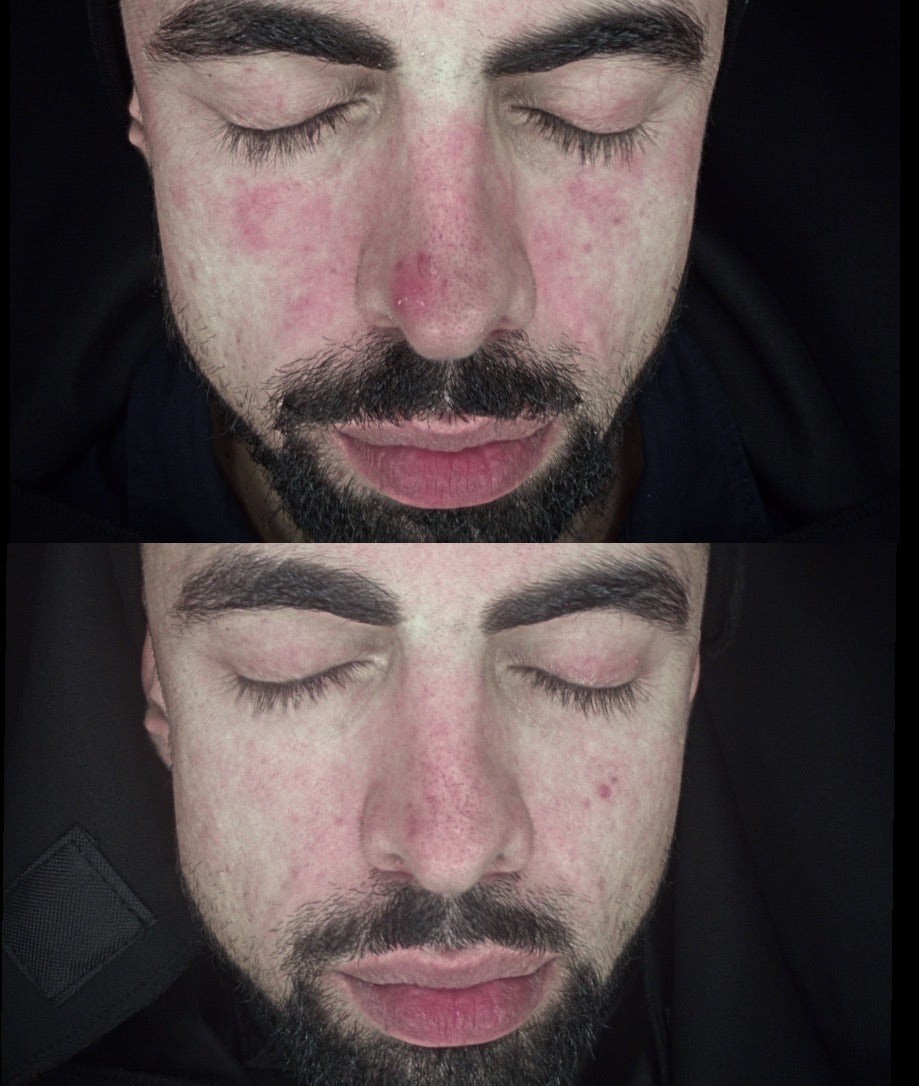Acne is a common skin issue that can make us feel self-conscious. But what's the story behind acne, and how do those annoying pimples actually appear on our skin? In this article, we'll uncover the science behind acne, explaining its causes, the process of pimple formation, and the life cycle of a typical breakout.
What's Acne? Think of acne, or acne vulgaris in fancy terms, as an ongoing skin condition that mainly likes to hang out on your face, neck, chest, back, and shoulders. It happens when your hair follicles, those tiny spots where your hair grows from, get all clogged up with oil and dead skin cells. This clogging leads to different kinds of blemishes, like pimples, blackheads, whiteheads, and cysts.
Hair Follicles: The Heroes and Villains: Before we dive into acne, let's understand the important role of hair follicles in your skin. Each hair follicle is like a tiny tunnel with a hair inside, an oil-making gland called a sebaceous gland, and a little hole called a pore. The sebaceous gland's job is to produce sebum, which is a natural oil that helps keep your skin nice and moist.
How Pimples Get Started: The whole pimple-creating process involves several things happening at once, like too much oil, skin cells not shedding correctly, some uninvited bacteria, and a dash of inflammation. Here's how it all comes together:
-
Oil Overload: Acne often kicks off with an oil surplus. Hormones, especially during puberty, can make your sebaceous glands go into overdrive, producing more oil than they should.
-
Skin Cells Go Awol: Normally, your skin cells shed and make way for new ones. But if you're prone to acne, these old skin cells hang around instead of leaving. They pile up in the hair follicles.
-
Clog Alert: The extra oil and trapped skin cells mix and create a clog inside your hair follicle. This clog is the start of a pimple.
-
Bacteria Crash the Party: Here's where the pesky Propionibacterium acnes (P. acnes) bacteria join the fun. They love hanging out in those clogged follicles and munching on the extra oil, which makes things even worse.
-
Inflammation Drama: P. acnes invites your immune system to the party, and that causes inflammation. The inflamed hair follicle wall can break, spilling its contents into the surrounding skin.
The Pimple Life Cycle: Now that we know how pimples get started, let's follow their journey:
-
Microcomedone (The Sneaky Starter): This is where it all begins, but it's invisible. Your hair follicle starts clogging up with oil and trapped skin cells.
-
Comedone (The Innocent Stage): If the microcomedone stays hidden under your skin, it can turn into either a blackhead (open comedone) or a whitehead (closed comedone). Blackheads have an open pore and turn black, while whiteheads stay closed under your skin.
-
Inflammatory Stage (The Red Bump Phase): If the hair follicle wall breaks due to inflammation, you get what we call inflammatory acne. This includes papules (small red bumps), pustules (those pimples with pus), and nodules or cysts (bigger, painful bumps hiding under your skin).
-
Healing and Sometimes Scarring: Once the pimple runs its course, your body's natural healing powers step in. Sometimes your skin heals without a scar, but not always, especially with those big, painful bumps.
Conclusion: Acne is a common skin issue caused by clogged hair follicles, leading to pimples, blackheads, whiteheads, and cysts. The process involves too much oil, stubborn skin cells, unwanted bacteria, and inflammation. Understanding the pimple's journey, from the invisible microcomedone to the possibility of scarring, can help you manage and treat acne better. Its also really important to ensure your skin is super healthy with lots of water so it can heal quickly reducing the chances of scarring!
For Preventing Acne:
-
Apothaka Barrier Support Serum: This serum helps strengthen your skin's natural defenses, making it more resilient against acne triggers.
-
CORSX Low Ph Good Morning Gel Cleanser: A gentle cleanser to keep your skin clean without over-drying or irritating it.
-
Obagi CLENZIderm Pore Therapy 2: Incorporate this pore therapy to target specific areas prone to breakouts.
For Treating Acne Breakouts:
-
Dr. LEVY R3 Cell Matrix Mask: Use this mask to rejuvenate your skin and promote healing during and after acne breakouts.
-
COSRX BHA Blackhead Power Liquid: This exfoliating solution can help unclog pores and prevent future breakouts.
-
Thoclor GF2 Skin Rejuvenation: This skin purifier may help soothe inflammation and promote the skin's natural healing process

